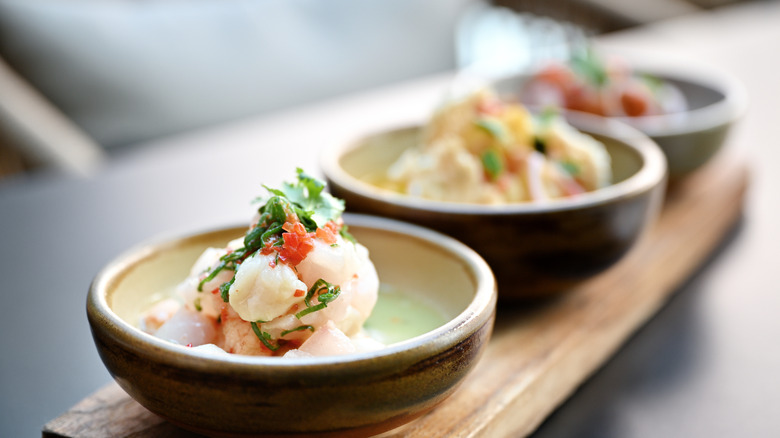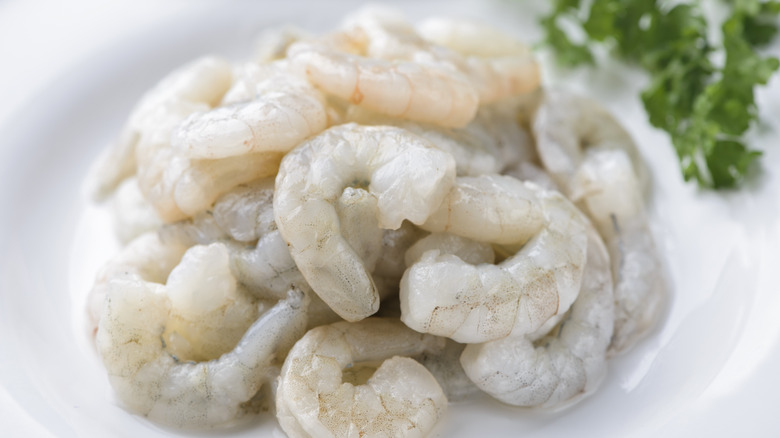Is It Actually Safe To Eat Shrimp 'Cooked' In Lemon Juice?
Foodie spoke with Kory Foltz, executive chef of Sunseeker Resort in Charlotte Harbor, Florida, about the safety of raw shrimp "cooked" in lemon juice in dishes like ceviche. First, a technical note: acids like citrus or vinegar don't actually cook the raw seafood in these dishes. Instead, they denature the proteins, which gives them a cooked appearance. However, this doesn't impart the same safeguards against harmful bacteria that prolonged exposure to heat does.
So, how can you consume raw shrimp more safely? Chef Foltz offers this advice: "Always use sushi-grade or previously frozen seafood from a trusted source, keep it cold, and marinate for a short time (15 — 30 minutes for shrimp) to avoid texture issues." Once cured, the shrimp should be eaten quickly. Even with these additional safety steps, ceviche and similar dishes are riskier for people who are pregnant or have underlying immunity issues. As a general rule, however, chef Foltz dubbed lemon juice-"cooked' shrimp to be "very safe." However, he says, you can always take extra precautions.
"[I]f someone's unsure about eating raw seafood in dishes like ceviche, they can pre-cook it," chef Foltz shares. For shrimp, this means just a light 1 to 2 minute simmer followed by shocking in an ice bath. "The trick is to keep the cooking light and quick so the seafood stays tender," Foltz advises. A classic shrimp cooking mistake is not watching the cooking time, and this applies doubly so in cases where you are substituting for raw product.
For safer raw shrimp, shop smarter
Where you get your seafood from also counts when food safety is your paramount concern, says Foltz. Grocery store shrimp, for instance, isn't always as fresh as you might think. Not all places you can buy fish are made equally, and picking the right shrimp or other seafood goes a long way for those concerned about maximum food safety. You are looking for proteins that are as fresh as possible, which you can suss out with a few savvy questions and putting your own senses to work.
For his money, chef Foltz likes to shop at a local fishmonger or market where lots of foot traffic ensures that the product turns over quickly and, therefore, can be relied upon to be at its freshest. Cooking frozen seafood is always an option as well, as blast-chilling can inhibit bacterial growth. When buying fresh, let your eyes and nose tell you if the raw seafood on offer is in good shape. "Look for fish with clear eyes, shiny skin, and a fresh, ocean-like smell (not fishy or sour). Fillets should be firm and moist, not slimy. Shrimp and shellfish should smell clean and firm, and live shellfish like mussels should be tightly closed or closed when tapped," he advises. When in doubt, you shouldn't hesitate to ask an employee when the seafood was caught and where it came from. Both flavor and safety depend on the answer, so you are entitled to this information.

